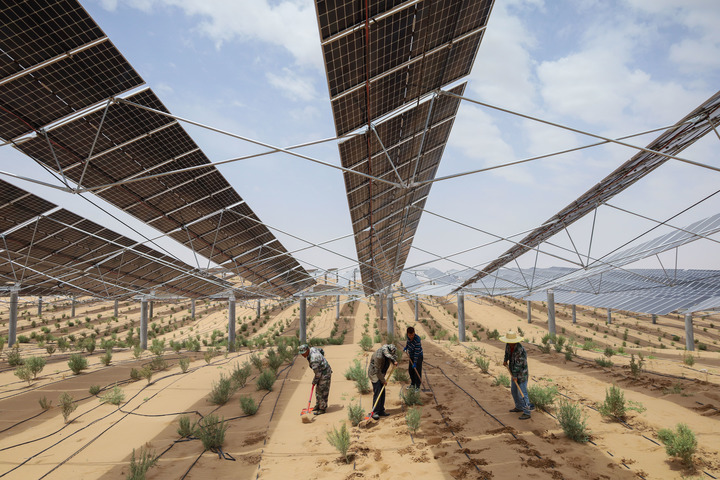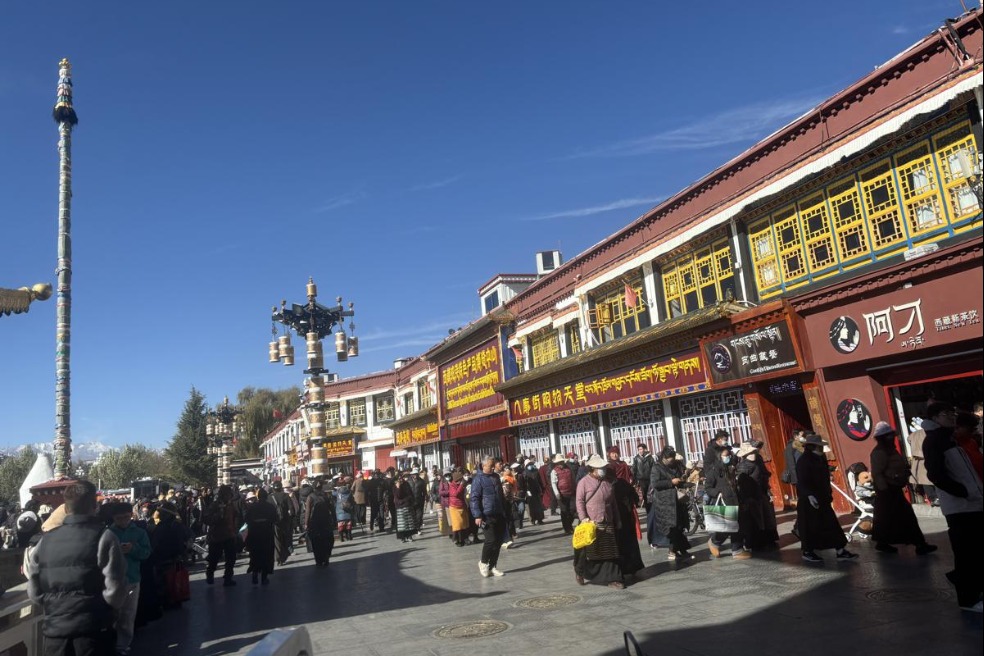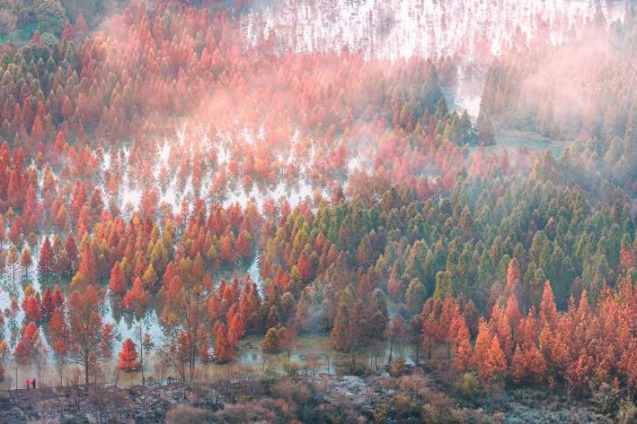Green efforts transform once barren land into oasis


LANZHOU -- On the southern fringes of Badain Jaran and Tengger, two large deserts covering 85,000 square km in China, Qin Zhaoping is testing the spray device for the fast-growing sand plants.
For Qin, a farmer in Hengliang Township, Wuwei City, northwest China's Gansu Province, such luxuriant vegetation was once beyond imagination.
Gansu, home to over 12 million hectares of sandy land, has been exploring a variety of new measures to bring a verdant look to the formerly barren land.
In today's desert area, photovoltaic panels provide shade for the plants, while efficient water-saving spraying facilities keep them thriving.
"The photovoltaic industry has been deeply integrated with local ecological protection endeavors," said Li Zhenhai, deputy director of the Wuwei development and reform commission.
Li added that over 1,300 hectares of desert plants have been grown in the photovoltaic sand control demonstration park in Wuwei, building up a solid green barrier to boost sand control.

In the eyes of local residents, harnessing photovoltaic panels for sand control is killing two birds with one stone and benefiting future generations. "It not only generates electricity and greens the sandy land but also increases our income," said Qin.
Placing straw checkerboard barriers has also proved an effective method to battle desertification, as they help reduce wind speed and can hold water used to help plants grow.
Yet as labor costs continue to rise, so do the costs of combating desertification. In response, Gansu has turned to technology for assistance.
- Consumer complaints rise over AI customer service failures
- Zhejiang authorities probe death of child in hospital
- China moves to reduce childcare costs
- High-altitude discovery sheds light on early settlers of Qinghai-Tibet Plateau
- Beijing seminar studies legal systems of Francophone countries
- Approved private vehicles now permitted direct access to Hong Kong





































